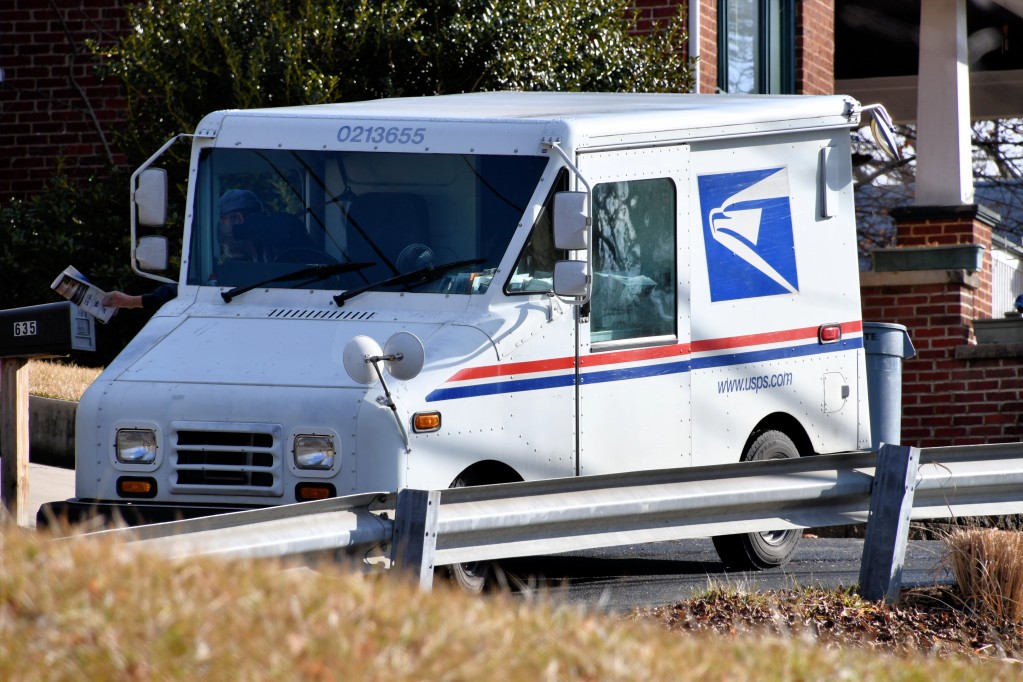The United States Postal Service (USPS) first began offering registered mail services in 1855 – almost 10 full years before the American Civil War began. Providing Americans with an opportunity to send safe, carefully tracked, and insured mail with a delivery certificate attached, a lot of people were happy with Registered Mail – even if they weren’t necessarily enthusiastic about the expense.
Well, 100 years later (1955) the USPS decided to do something about that specifically. Creating a program called Certified Mail, this solution was designed to offer many of the same benefits that Registered Mail provided (aside from a few) at a fraction of the cost. It was an almost overnight success. Each and every year, nearly 200,000,000 pieces of certified mail are sent throughout the United States. People depend on this service annually to provide tract, confirmed delivery solutions for all of their packages and parcels that they are sending via first-class mail.
At the same time, not everyone is completely sure of whether or not they should be taking advantage of Certified Mail or Registered Mail solutions. For their part, the USPS has done a decent job of explaining exactly what each of these options are – though things can still get a little bit confusing. That’s what this guide is designed to clear up. In the rest of this detailed breakdown you’re going to learn about the cost of Certified Mail, the difference between Certified Mail, Registered Mail, and regular first class mail, as well as learn about the big benefits you’ll enjoy when you choose to take advantage of this solution. Let’s get right into it.

What is Certified Mail?
As we alluded to a moment ago, Certified Mail has a lot in common with Registered Mail (it’s a more expensive predecessor). Launched in 1955, Certified Mail gives Americans an opportunity to send mail through first-class delivery while getting proof of receipt or delivery attempts attached. This basically means that you’ll be able to send a package or parcel via first-class mail with the USPS and request that upon delivery the recipient sign for the package or parcel itself. Everything is tracked every step of the way (though not quite as aggressively as with Registered Mail), and you will be notified the moment that your recipient signs for your package or parcel. If the mail is not delivered the first time multiple attempts will be followed up, and if the recipient denies the receipt of the mail itself you’ll get a record of that as well. At the end of the day, this program is basically designed to give you more peace of mind over your packages and parcels actually arriving at their ultimate destination. Not only that, but you get some logistical benefits as well, particularly when it comes to knowing that people are actually receiving the things you are sending them through the mail (and having a paper trail to confirm that).
What Makes Certified Mail Different from Registered Mail?
There are a couple of things that make Certified Mail different from Registered Mail, and we aren’t just talking about USPS certified mail cost structures compared to Registered Mail, either. For starters, Certified Mail is really only designed to get you a signed receipt upon delivery, notification of delivery attempts, or notification of a Certified Mail package or parcel being refused upon delivery by the intended recipient.
Registered Mail, on the other hand, was designed to provide you with a far more secure, more closely tracked, and even insured mail delivery process. A lot of people choose Registered Mail – the more expensive option – when they want to send valuable things through the mail, when they want to track the chain of custody every step of the way, and when they want to make sure that there package or parcel is locked down and secured throughout the delivery process. If you aren’t sending something incredibly valuable that needs to be insured, needs to be locked away or protected, or needs to have a chain of custody documented at every turn, Certified Mail offers almost all of the same benefits of Registered Mail without the expense.
In fact, as we dive into in just a moment, it’s not at all uncommon for Certified Mail rates and Certified Mail fees to be a fraction of what you pay for Registered Mail (through first-class delivery processes). But that’s something will cover a little more in depth later on. As far as how Certified Mail differs from regular mail, the main difference is the signature upon receipt that Certified Mail brings to the table.
With traditional mail, you drop your envelopes, your packages, or your parcels into the mail and then hope that they arrive at your intended destination in a couple of days. You have no real tracking, you have no confirmation of delivery, and you have no way to ensure that everything got where you wanted to go until your recipient lets you know. Certified Mail provides reliable tracking, provides signature upon delivery confirmation, and gives you a little bit more peace of mind. It’s handled differently than traditional first-class mail as well, so you get that big bump in delivery reliability, too.

Who Can Make the Most of Certified Mail Services?
According to stats directly from the United States Postal Service, most everyone can take advantage of Certified Mail services – and millions of people do each and every year. The most recent statistics say that 56% of Americans have either sent or received Certified Mail at some point in their lives. On top of that, 87% of Americans are aware of what Certified Mail is and either have plans to take advantage of it in the future or are at the very least interested in potentially doing so. Most commonly, though, the business community makes use of Certified Mail more often than not. The opportunity to send important documents through first-class mail delivery by other USPS, but still getting tracking information and having a signed receipt upon delivery, just makes sense for businesses large and small. This is especially true when you are sending sensitive documents (sensitive from a security standpoint or from a time standpoint) that you need to know arrive when you expect them to.
Some of the things sent commonly through Certified Mail solutions include, but are not limited to:
- Business invoices
- Contracts and agreements
- Tax information
- Banking documents
- Important information regarding different regulatory compliance rules and regulations
- Time sensitive information and communications
- Personally identifying records or information
… And that’s just the tip of the iceberg!
At the end of the day, anyone looking to have mail securely delivered and reliably tracked with a delivery confirmation can find a lot of value in Certified Mail. Most of those folks aren’t going to balk at the cost of Certified Mail, either (especially when you stack USPS Certified Mail cost structures up against the always more expensive Registered Mail option).

How to Send Something via Certified Mail
If you haven’t ever sent Certified Mail the odds are pretty good that you’re hung up on the “how much does it cost to send Certified Mail” question – but it may be more important to understand how the process unfolds before you look at Certified Mail rates and Certified Mail fees. To kick things off, you’re going to want to visit your local post office and request forms necessary to fill out Certified Mail to begin with. Any local post office will be able to provide you with the necessary paperwork. You’ll most often be handed Certified Mail Form 3800, the standard form that uses first-class mail envelopes to deliver the information that you are looking to have sent in the first place.
If you’d like to send a package or parcel via Certified Mail you’ll still have to fill out Form 3800, but you may have to fill out other forms as well. This will vary depending on what you’re looking to send through this particular shipment method to begin with. After filling out the form you’re going to see a green and a white sticker on the form itself with USPS tracking number information. You’re also going to see a perforated receipt, contact fields that need to be fully filled out, and a handful of other details regarding the actual Certified Mail process.
After getting your hands on Form 3800 it’s important that you address the envelope that you are sending according to the details outlined on the form itself. You also need to attach your Certified Mail sticker to the top of the envelope, still leaving space for postage at the top right the way you would with any other first-class mail delivery. The next step is to choose the type of delivery and “mail add-ons” that you’d like to include with your Certified Mail.
There are a menu of options to choose from on Form 3800, including:
- Basic Certified Mail
- Mail Return Receipt Service
- Digital Email Return Receipt Service
- Return Receipt for Merchandise and Special Handling Requests
- A Certificate of Mailing
Each of these add-ons are going to increase the Certified Mail rates and Certified Mail feeds you’ll have to pay to get your mail delivered, but all of those fees are going to be clearly outlined on that menu so that you know exactly what you have to spend to get your mail sent.

Just How Much Does Certified Mail Cost, Anyway?
Now let’s get into figuring out how much is a certified letter specifically, shall we? As of 2022, Basic Certified Mail rates and Certified Mail fees come in at $4.00. You can also add Mail Return Receipt services for $3.25, Email Return Receipt services for $2.00, Return Receipts for Merchandise and Special Handling for $4.30, and a Certificate of Mailing for $1.50.
It’s important to understand that the cost of Certified Mail is added on top of the standard fee you pay to have first-class mail or priority mail delivered to begin with. First-class mail is available for all and the loads, packages, and parcels that weigh no more than 13 ounces while priority mail is better for those that need two or three day deliveries. So how much is certified mail going to cost you?
Truth be told, not that much! Even if you purchased ALL of the extra add-ons that we highlighted above you would still end up spending less than $20. You may not get all the benefits that Registered Mail provides with all of these extra add-ons, but you want going to have to worry about paying the skyhigh Registered Mail fees on packages and parcels, either. That’s tough to beat!
Of course, not all of the mail that you send through the USPS needs to be certified in the first place. Not everyone is sending absolutely every envelope they ever put into their mailbox or a postal box with Certified Mail stickers attached. We just don’t need to track order have a signed receipt of delivery on every piece of mail.
At the same time, it is nice to know that in the event that you need to take advantage of tracking information on a first-class envelope or parcel – or need to know that your mail actually reached its destination and was signed for by the intended recipient – you won’t have to spend a mountain of money to get it done.
All in all, USPS Certified Mail cost structures won’t ever break the bank. You will have to factor in the cost of a stamp or the extra cost of priority mail delivery (if you need it there quickly), but you’ll still end up saving a lot more money compared to sending your certified letters through UPS, Federal Express, DHL, or the like.
Best of all, you won’t have to pony up all the extra cash to send your mail via Registered Mail through the USPS, either. Certified Mail is always less expensive, and the only trade-off is you don’t get to track the chain of custody or the extra insurance that Registered Mail brings to the table.
For more information about USPS Certified Mail, visit your local post office directly.





